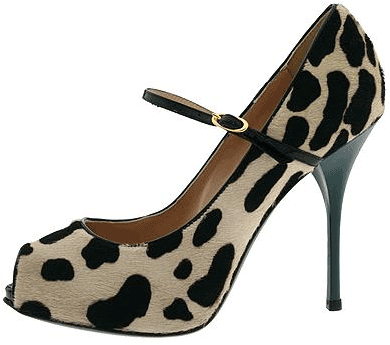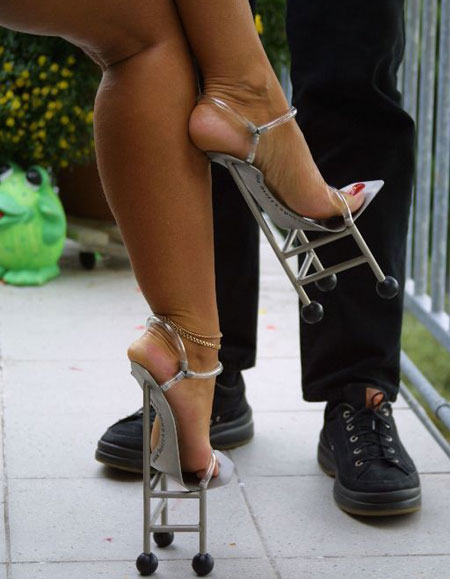Shoes, shoes, shoes
- Featured
- 1 Comment on Shoes, shoes, shoes
- Posted on


Shoe foot covering, usually of leather, consisting of a sole and a portion above the sole called an upper. In prehistoric times skins or hides may have been tied around the foot for protection and warmth; studies of the foot bones of ancient humans suggest that some form of sturdy footwear was worn by human beings beginning between 40,000 and 26,000 years ago. The shoes found with the 5,300-year-old “Ice Man” in the Tyrolean Alps were made of skins and braided-bark netting and stuffed with straw and moss. The sandal, a very early form of the shoe, was worn in Egypt, Greece, and Rome; a more ancient example (c.8000 BC), woven from plant materials, was found in an Oregon cave. An early form of the boot was also known in Greece and Rome. The characteristic shoe of the Middle Ages was the soft, clinging moccasin, which extended to the ankle. It was highly decorated and was of velvet, cloth of gold, and, increasingly, of leather. By the 13th cent. the toe had become greatly elongated until a century later the point had to be held aloft by a chain attached to the knee. After 1377 wooden clogs, called poulaines or pattens, were introduced. A forerunner of the heeled shoe, they were fastened under the shoe (if not a part of the shoe itself) to protect it from mud or water. The chopine, an ornamental shoe with a very high sole, went to fantastic heights. After 1500, styles reversed themselves, and the width of the toe was exaggerated; two colors and slashing were often employed to complement the costume. The high heel came into fashion with Elizabeth’s reign in the late 16th cent. and was worn by both men and women; the shoe was colorfully decorated with rosettes, lace, and embroidery. France introduced (c.1600) the high-top boot which developed into the cavalier’s boot with its wide, floppy top. The late 17th cent. saw the emergence of the square toe, high tongue, and buckles. Heels were lowered, becoming the French curved heel, until they disappeared (c.1780). With the new Empire styles, flat soft shoes with ribbon ties became the style for women, and military boots became the vogue for men. Guilds of shoemakers or cobelers existed in the Middle Ages; in the American colonies, the earliest known shoemaker was Thomas Beard, who arrived in Salem, Mass., in 1629. Early shoemakers worked at home, in small shops, or as itinerant workers who went to homes to make up the annual supply. Hand processes were used until c.1833; thereafter the rapid invention and development of machinery revolutionized the industry; today over 180 different kinds of machines are employed. As machinery became more specialized and the use of leather became primary, shoe styles and measurements became more refined and exact. From the high button shoe of the late 19th cent. to the low-cut pump of modern times (popular after 1920), the range of materials has increased, and styles are designed for every purpose and need.
Since time immemorial, shoes have been made of leather. The luxury leather used in the finest men’s and women’s shoes is calf. The most versatile leather, used for many kinds of shoes, is side leather, made from cattle hide and called side because the large hide is cut down the middle lengthwise into two sides for handling.
Kid leather, made from goatskin, is used for women’s dress shoes and men’s slippers. Sheepskin is used in linings and slippers. Reptile leathers (alligator, lizard, and snake) are used in women’s and some men’s shoes. Cordovan (a small muscle layer obtained from horsehide) is a heavy leather used in men’s shoes. Patent leather, usually made from cattle hide, is given a hard, glossy surface finish. Suede is made from any of several leathers (calf, kid, or cattle hide) by buffing the inner surface to produce a napped finish.
Materials
Though still dominant, leather is being replaced in shoes by rubber and man-made fibres and compositions, particularly for heels and other shoe components. Linings and uppers may be natural or coated fabrics. Welting, heels, and counters (heel stiffeners) may be plastic. Most inner and outer soles are now nonleather. A fabric base coated with a chemical surface finish can be made in a variety of textures and designs, many simulating the grain of leather. Synthetic patent and synthetic suede are also used in shoes. Such modern materials cost less and meet performance standards. Certain fabrics, including linen, satin, and silk, are also used in footwear.
Tell Me About Shoe Care!
Taking care of shoes ensures they last longer. The following measures are good recommendations to help prolong the life of each pair of shoes;
* Leather soled shoes should always be worn in dry conditions for the first few times. This hardens the sole and gives a rougher finish that helps to keep out water.
* Getting shoes very wet is not good for them. However, if this occurs, allow them to dry naturally, and never use direct heat. If leather soles get very wet, they will expand. Allowing them to dry out naturally and not using direct heat will help the layers from coming away or peeling back. Leather is a porous, breathable, material and is not naturally waterproof. A protector spray will help give the leather a waterproof coating.
* It is always wise to own more than one pair of shoes, as a single pair should never be worn constantly. Always try to allow them to rest for a day between wearing. Using wooden shoe tree with maintain the shape of the shoes, and help absorb internal moisture.
* Use a good polish or wax regularly to maintain the moisture levels and appearance of the shoes. Spending some time working the polish into the leather will pay back in the long term and enhance its feel and finish.
* Do not leave shoes too long between repairs, and always use a recommended quality shoe repairer. A bad repair job could ruin a good pair of shoes.
* Moccasins are intended to be a summer shoe and so not take excessive wear or water well. The nature of their construction means that there us a hidden channel groove around the sole. When the sole becomes very wet and then dries out, the leather covering the channel can peel away. This is not a fault of the shoe and can be helped by wearing the shoes in a dry condition several times first.
Shoe Returns
* All shoes should be tried on a carpeted surface before wear. All shoes must be returned in their original, undamaged shoe box (including stow bags), as this is considered part of the product. Shoes that are returned without boxes or in damaged boxes may not be accepted, and may be sent back to the customer.


















Fantastic presentation!